Alex RN1ON informs that Sergey V. 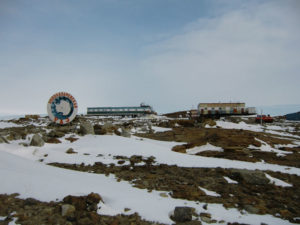 Timofeyev, R3IW will be active on HF Bands mostly on Digi modes as RI1ANW from Novolazarevskaya Station (WAP RUS-Ø9), Antarctica, until March 2019 together with RI1ANL (operated by RW6ACM).
Timofeyev, R3IW will be active on HF Bands mostly on Digi modes as RI1ANW from Novolazarevskaya Station (WAP RUS-Ø9), Antarctica, until March 2019 together with RI1ANL (operated by RW6ACM).
Alex says that Sergey, R3IW (ex.call-sign RW3IW) was not very active, so there is no information of his new callsign on QRZ.com. Sergey’s callsign RI1ANW for Novolazarevskaya was just issued on last July 23.
Please note that at the beginning of 2018, Sergey R3IW made 30-40 QSOs signing RI1ANF operating from Novolazarevskaya Station,  Antarctica (not from Bellingshausen Base WAP RUS-Ø1), so make sure to eventually allocate RI1ANF (2018) to Novolazarevskaya not to Bellingshausen.
Antarctica (not from Bellingshausen Base WAP RUS-Ø1), so make sure to eventually allocate RI1ANF (2018) to Novolazarevskaya not to Bellingshausen.
QSLs for both callsigns RI1ANL and RI1ANW and few of those QSOs as RI1ANF (2018) must be requested only to RN1ON, ClubLog OQRS.
Direct requests via RN1ON:
Alexei V. Kuz’menko, P.O. Box 599, 163000, Arkhangelsk, Russia
TNX Alex RN1ON

 WAP has just got the sad news of VE7IG SK.
WAP has just got the sad news of VE7IG SK.
 The pic below, shows L to R: EA5KB, CT4NH, IK1GPG, I1BSN, IK1HSS and the good friend Reg VE7IG.
The pic below, shows L to R: EA5KB, CT4NH, IK1GPG, I1BSN, IK1HSS and the good friend Reg VE7IG. A scientific expedition will next year try to find the Endurance, the ill-fated ship of Antarctic explorer Sir Ernest Shackleton.
A scientific expedition will next year try to find the Endurance, the ill-fated ship of Antarctic explorer Sir Ernest Shackleton.
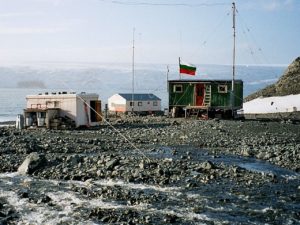 The Lame Dog Hut was erected in April 1988, at 62° 38′ 29″ South, 60° 21′ 53″ West and had been the main building of St. Kliment Ohridski Base until 1998. It is presently the oldest preserved building on Livingston Island, used as radio shack and post office, and hosting a museum exhibition of associated artefacts from the early Bulgarian science and logistic operations in Antarctica.
The Lame Dog Hut was erected in April 1988, at 62° 38′ 29″ South, 60° 21′ 53″ West and had been the main building of St. Kliment Ohridski Base until 1998. It is presently the oldest preserved building on Livingston Island, used as radio shack and post office, and hosting a museum exhibition of associated artefacts from the early Bulgarian science and logistic operations in Antarctica.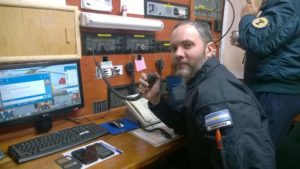 Hereby a couple of pics of Cristian Mauro Fabregat, LU4CMF, operator at Marambio Base as LU4ZS in a site with -50ºC and 100 km/h of Antarctic wind.
Hereby a couple of pics of Cristian Mauro Fabregat, LU4CMF, operator at Marambio Base as LU4ZS in a site with -50ºC and 100 km/h of Antarctic wind.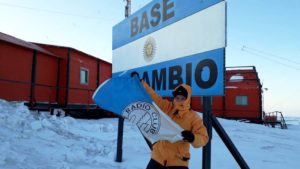
 our atmosphere. But that breakthrough was not entirely satisfying because those neutrinos had rained in uniformly across the sky: There was no indication of the specific objects that may have emitted them—no “point source.”
our atmosphere. But that breakthrough was not entirely satisfying because those neutrinos had rained in uniformly across the sky: There was no indication of the specific objects that may have emitted them—no “point source.”
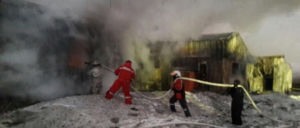 support maritime traffic, collaborate in search and rescue actions, control pollution, support evacuation actions, among other tasks.
support maritime traffic, collaborate in search and rescue actions, control pollution, support evacuation actions, among other tasks. The INACH will send personnel to the area as soon as possible to evaluate the conditions of the Escudero Scientific Base, adjacent to the Maritime Governance. The collaboration between both bases allowed to give viability and safety conditions to the maritime activities of the Antarctic Scientific Expedition. The Bases of the INACH and the Maritime Governance shared since 2011 the use of a sewage treatment plant in order to meet the environmental commitments derived from the Madrid Protocol. The viability of its use should be defined with urgency, since Base Prof. Julio Escudero represents the main Chilean scientific base, with more than 250 scientists passing through it every summer season.
The INACH will send personnel to the area as soon as possible to evaluate the conditions of the Escudero Scientific Base, adjacent to the Maritime Governance. The collaboration between both bases allowed to give viability and safety conditions to the maritime activities of the Antarctic Scientific Expedition. The Bases of the INACH and the Maritime Governance shared since 2011 the use of a sewage treatment plant in order to meet the environmental commitments derived from the Madrid Protocol. The viability of its use should be defined with urgency, since Base Prof. Julio Escudero represents the main Chilean scientific base, with more than 250 scientists passing through it every summer season.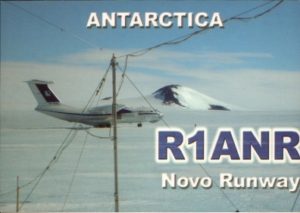 Making an HF contact into Antarctica is always a great DX! One of the very active spot on the Icy Continent is the Blue one Runway (or Novo Runway aka DROMLAN), an Airbase managed by ALCI (Antarctic Logistics Centre International) that works during the austral summer from late October to beginning of March, as a logistics service provider in the Dronning Maud Land Air Network (DROMLAN) since its inception in 2002. It offers a full range of services for the flights from Cape Town to Antarctica.
Making an HF contact into Antarctica is always a great DX! One of the very active spot on the Icy Continent is the Blue one Runway (or Novo Runway aka DROMLAN), an Airbase managed by ALCI (Antarctic Logistics Centre International) that works during the austral summer from late October to beginning of March, as a logistics service provider in the Dronning Maud Land Air Network (DROMLAN) since its inception in 2002. It offers a full range of services for the flights from Cape Town to Antarctica.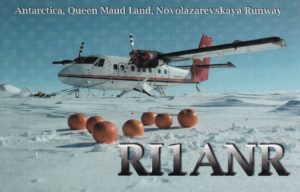 In this very important site, Ham radio activity has never been left out. Three unforgettable operators; OlegSakharov ZS1ANF, Slava Savkin RD3MX and Alex Shmarin UA1PAW have been active from Novo Runway (70° 49’ 31” South, 11° 37’ 41” East) since 2007 giving thousands of Hams a real new one or a great DX, tying up their callsigns to the history of Radio communication from the Antarctic.
In this very important site, Ham radio activity has never been left out. Three unforgettable operators; OlegSakharov ZS1ANF, Slava Savkin RD3MX and Alex Shmarin UA1PAW have been active from Novo Runway (70° 49’ 31” South, 11° 37’ 41” East) since 2007 giving thousands of Hams a real new one or a great DX, tying up their callsigns to the history of Radio communication from the Antarctic. weekend,and it will be managed by LU4AA, foreseeing an operation in 7 MHz band, SSB mode.
weekend,and it will be managed by LU4AA, foreseeing an operation in 7 MHz band, SSB mode.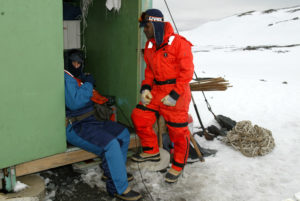 Refuge Emílio Goeldi (WAP BRA-Ø5) is a Brazilian Antarctic summer facility on Elephant Island . It was named after the Swiss-Brazilian naturalist and zoologist Emil Goeldi. The structure, built in 1988, can accommodate up to 6 scientists for up to 40 days and depends both logistically and administratively on Comandante Ferraz Station station (WAP BRA-Ø2).
Refuge Emílio Goeldi (WAP BRA-Ø5) is a Brazilian Antarctic summer facility on Elephant Island . It was named after the Swiss-Brazilian naturalist and zoologist Emil Goeldi. The structure, built in 1988, can accommodate up to 6 scientists for up to 40 days and depends both logistically and administratively on Comandante Ferraz Station station (WAP BRA-Ø2).
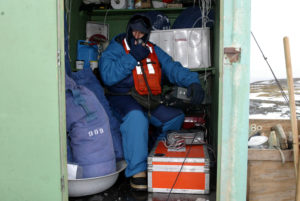
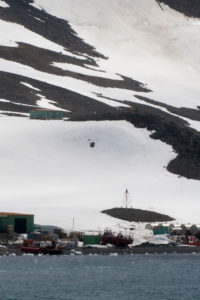 Located at 62° 5’ South, 58° 22’ West, Martel is an inlet forming the northeast head of Admiralty Bay on King George island, in the South Shetlands Islands, off Antarctica. It was charted in December 1909 by the Fourth French Antarctic Expedition under Jean Baptiste Charcot and named “Fiord Martel” after J.L. Martel, a French politician.
Located at 62° 5’ South, 58° 22’ West, Martel is an inlet forming the northeast head of Admiralty Bay on King George island, in the South Shetlands Islands, off Antarctica. It was charted in December 1909 by the Fourth French Antarctic Expedition under Jean Baptiste Charcot and named “Fiord Martel” after J.L. Martel, a French politician.